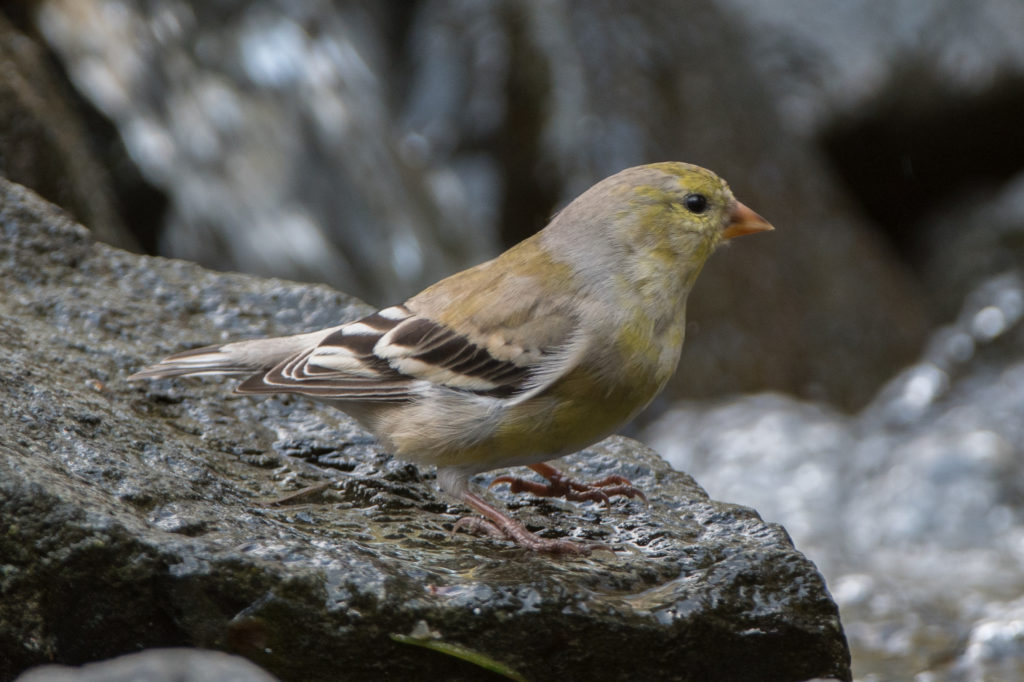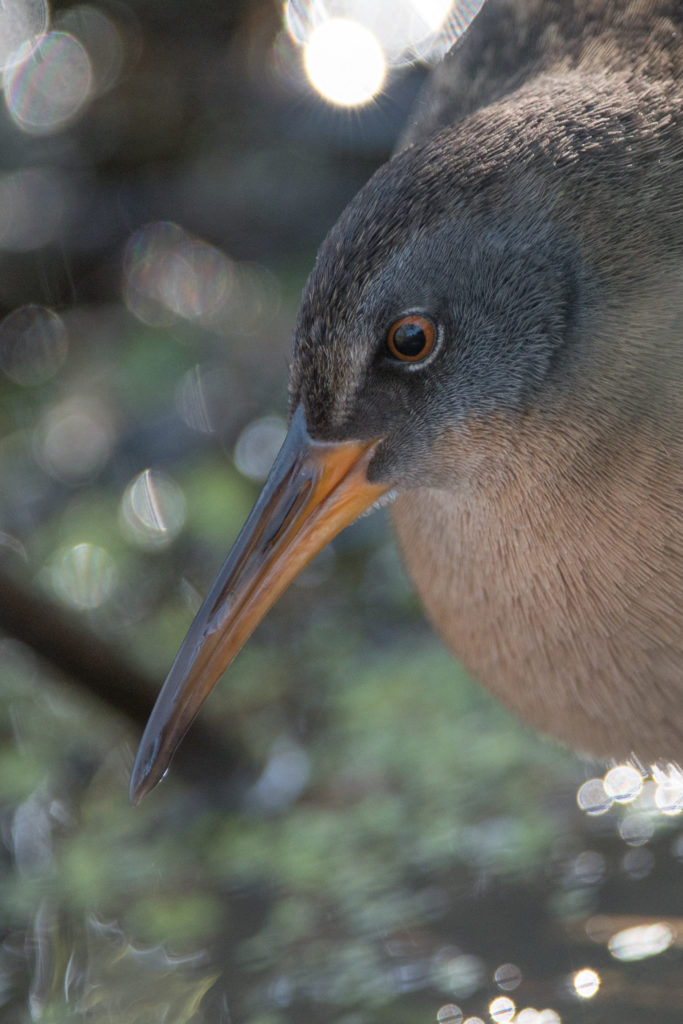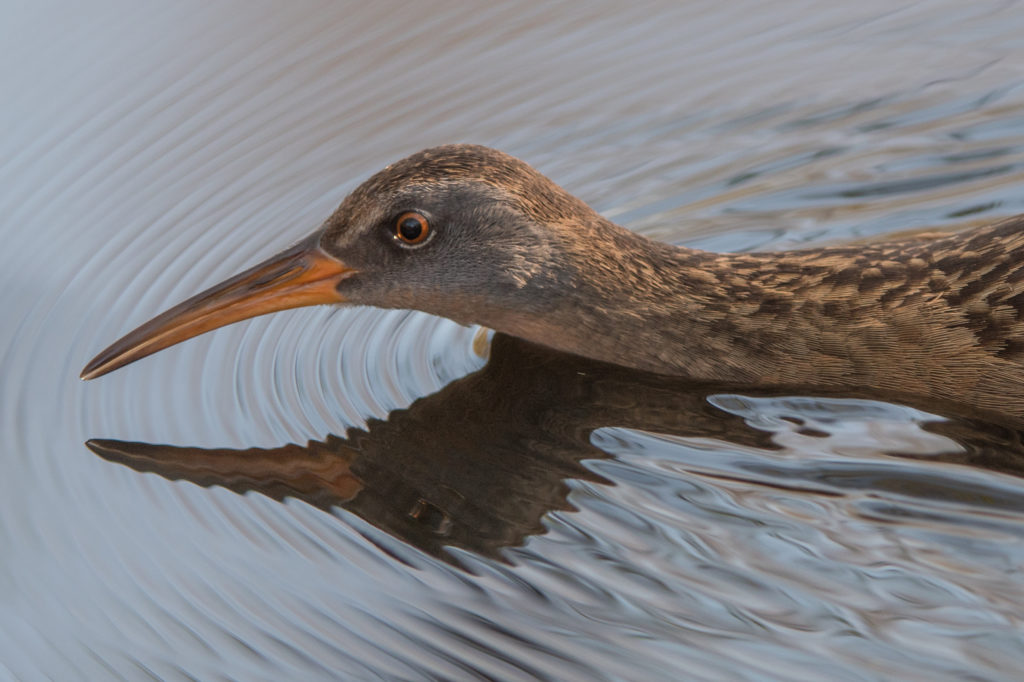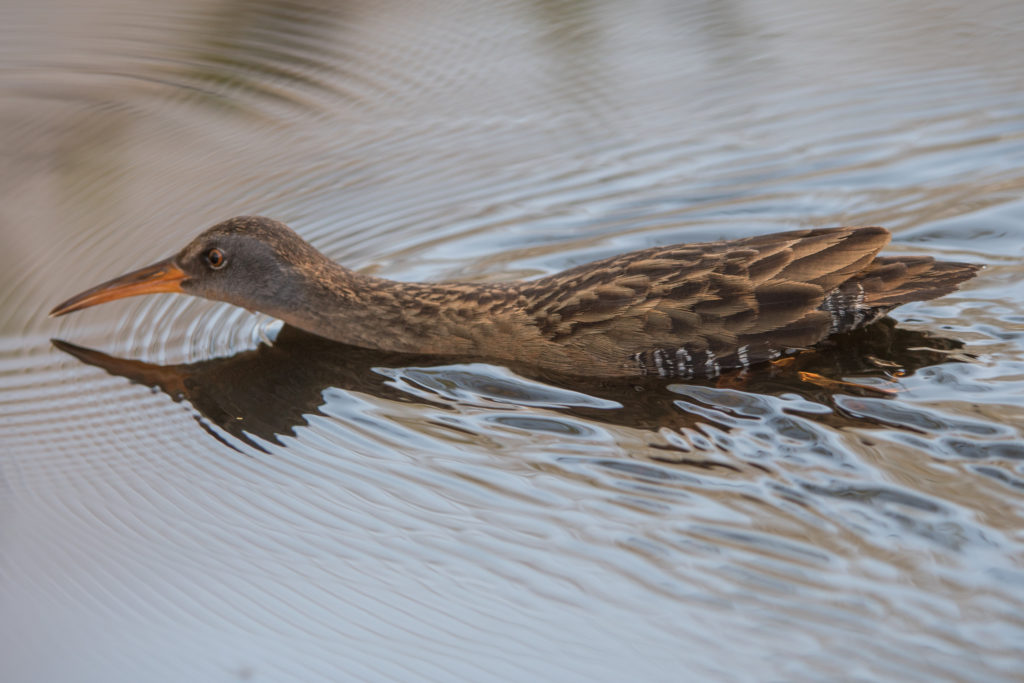April 7, 2020 was a significant day, both in the yard and away. Our first female American goldfinch appeared, exactly a week after the first male appearance. Here’s a photo of her approaching the watercourse for a drink.

Today, one day later, we have two male and two female American goldfinches! They will continue arriving until they become our most numerous spring/summer species, numbering between ten and fifteen birds. They probably already outnumber our most numerous winter species, the Dark-eyed juncos (Oregon race), which have mostly departed for higher elevations where they will breed. In the past couple of years we have had a pair remain around the yard for the summer, but they have been parasitized by Brown-headed cowbirds.
Another significant event occurred when I followed a friend’s tip about the location of Virginia rails. Under adverse conditions (heavy brush, backlighting and the rail’s furtive movements) I was able to observe and photograph a rail. Considering the conditions I was quite happy with the photos.

I have to confess that I never thought about these birds as swimmers… the very few I have observed have always been in shallow water among the shore or reeds. I certainly didn’t think they would drown, considering their habitat next to water, but I never thought about them being the very capable swimmers that this bird demonstrated!


